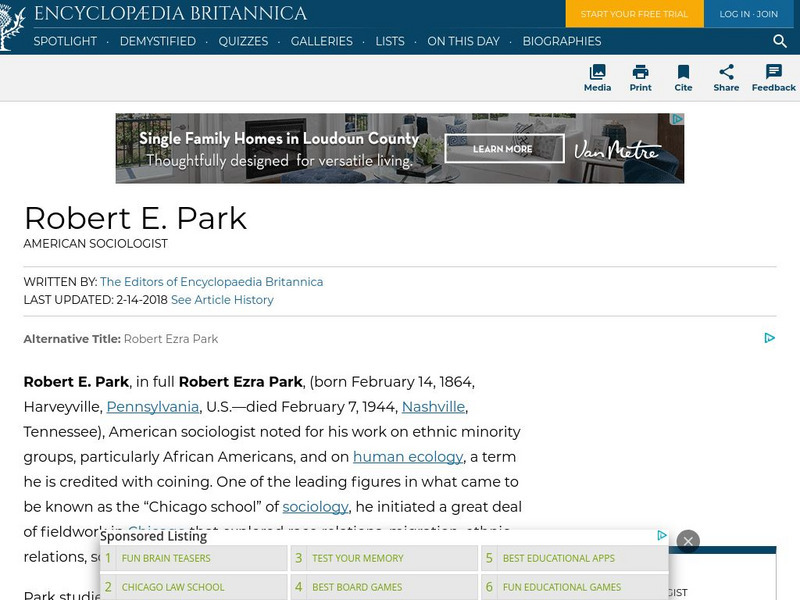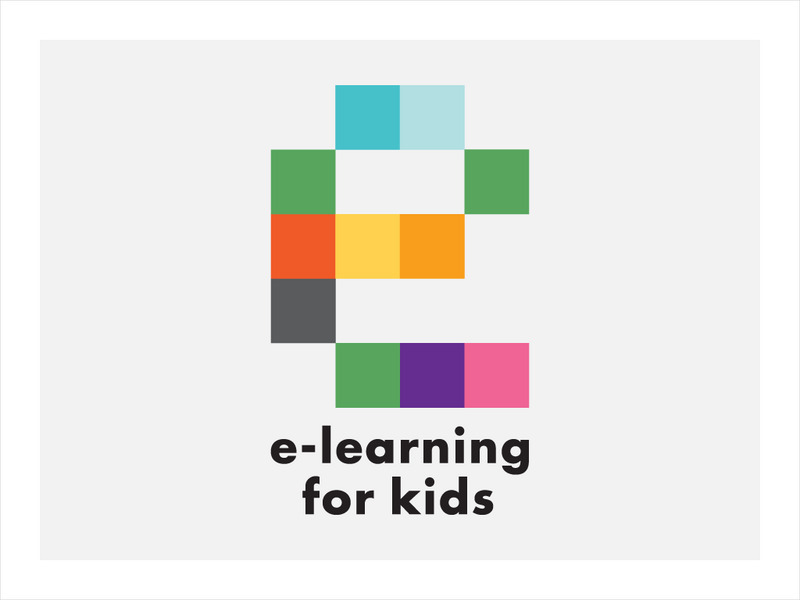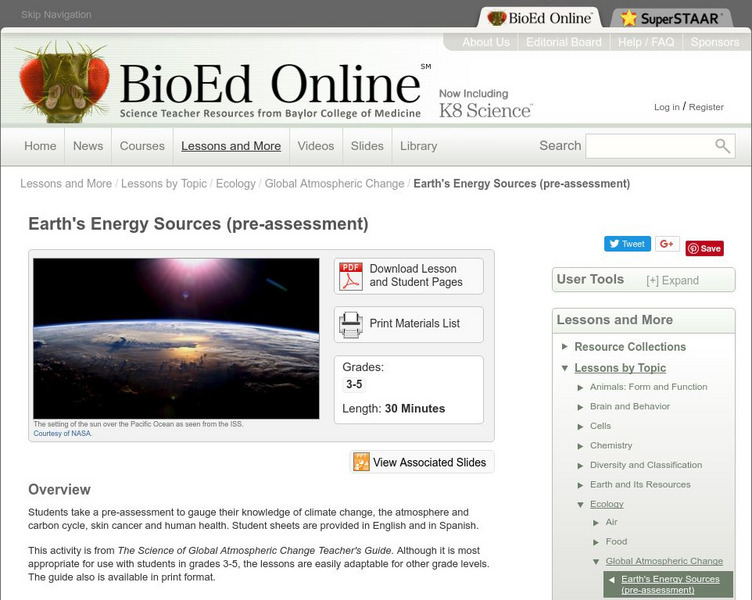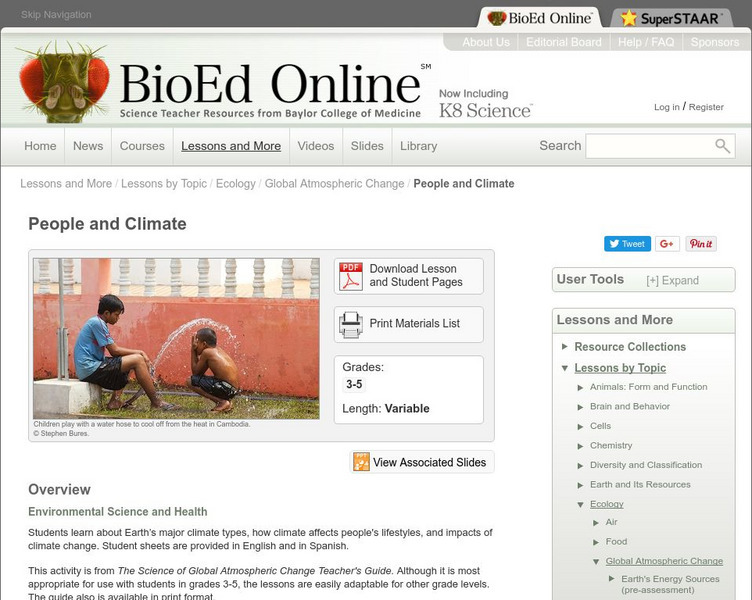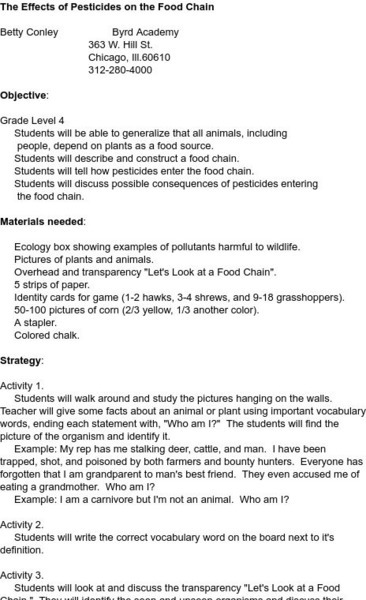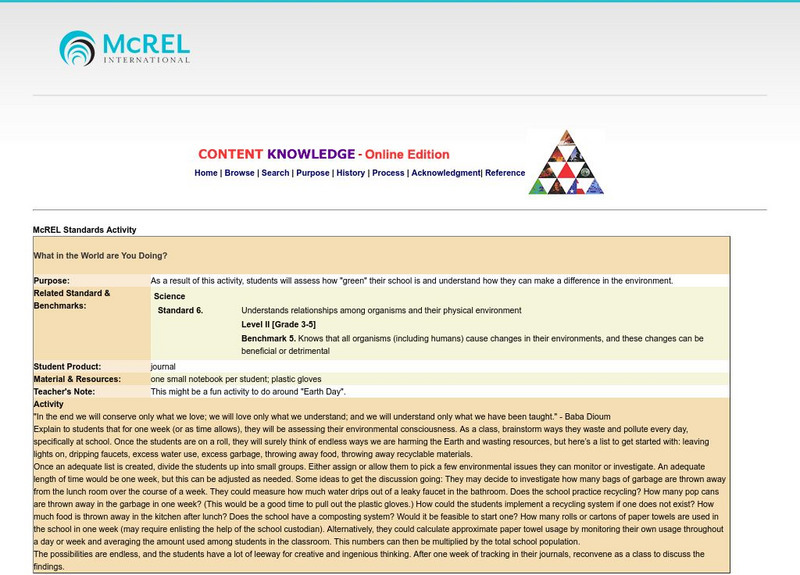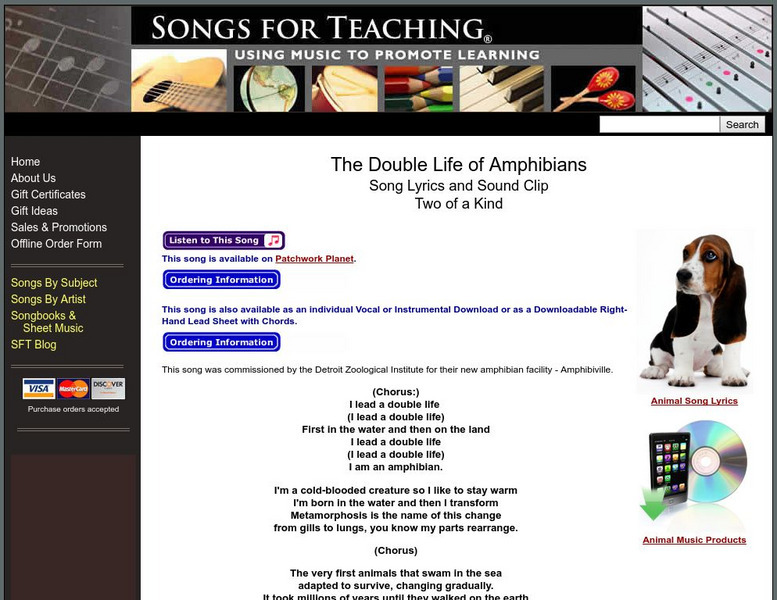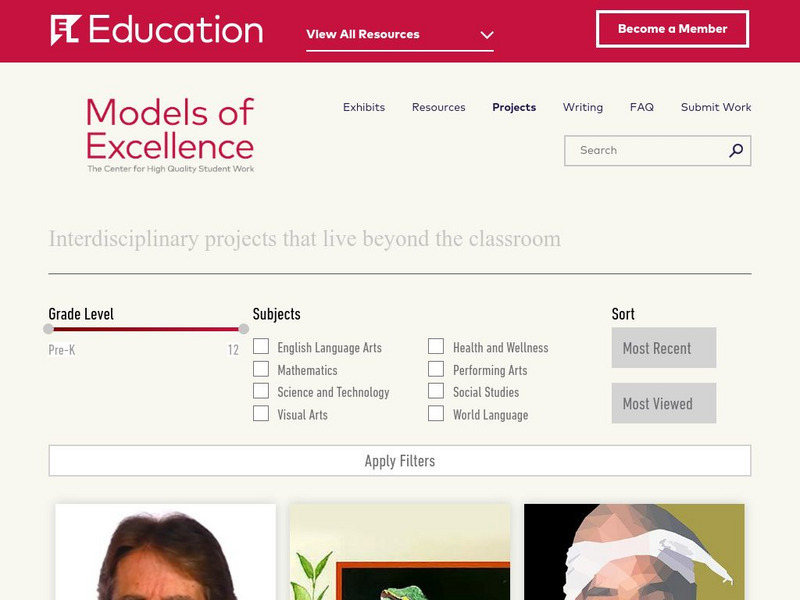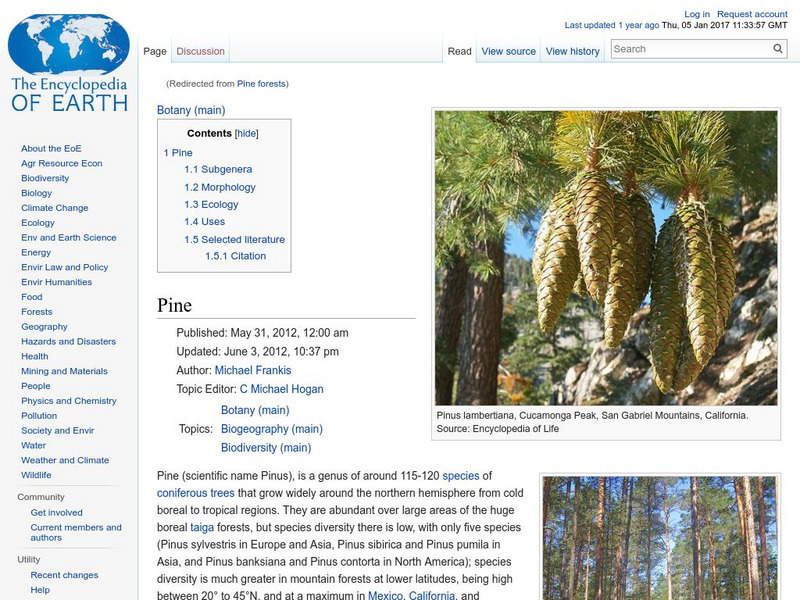Hi, what do you want to do?
PBS
Pbs Learning Media: Untamed: The Wildlife Center of Virginia
In this learning module with the video series UNTAMED: The Wildlife Center of Virginia, students will learn from Ed Clark, the staff of the Wildlife Center of Virginia, and special guests discuss the issues facing wildlife and what...
Encyclopedia Britannica
Encyclopedia Britannica: Robert E. Park
This entry from Encyclopedia Britannica features Robert E. Park, an American sociologist noted for his work on ethnic minority groups, particularly African Americans, and on human ecology, a term he is credited with coining. One of the...
PBS
Nh Pbs: Nature Works: Temperate Deciduous Forests
NatureWorks offers some fascinating information about the Temperate Deciduous Forests. Students and teachers will learn what makes these forests special, what animals live in this biome, what plants grow in this biome, and more.
E-learning for Kids
E Learning for Kids: Science: Pacific Ocean: Mexico: Why Must We Care for the Environment?
Join Mateo on his trip to Mexico. During his trip, he will teach all about conservation, and contributing to a healthy environment.
TeachEngineering
Teach Engineering: Product Development and the Environment
In this activity, students investigate the life cycle of an engineered product and how the product impacts the environment. They analyze a product using a simple life cycle assessment that assigns fictional numerical values for different...
Teachers.net
Teachers.net: Acid Rain Go Away
in this lesson plan students conduct an experiment to find out how acid rain can harm plants.
BioEd Online
Bio Ed Online: Earth's Energy Sources (Pre Assessment)
A pre-assessment at the beginning of a unit on global atmospheric change. It checks understanding of issues around climate change and the impact it has on the environment and on human health. The lesson and accompanying slideshow can...
BioEd Online
Bio Ed Online: Why Is Water So Important?
In this post assessment activity students review points covered in the attached unit and reach conclusions regarding the importance of water to human health. Student sheets are provided in English and in Spanish.
BioEd Online
Bio Ed Online: About Air
In this lesson students will use popcorn of different colors to model the composition of air. They learn that gases occupy space, air is a mixture of different gases, and the oxygen needed by the human body is not the principal component...
BioEd Online
Bio Ed Online: The Science of Global Atmospheric Change: People and Climate
The impact that climate and climate change have on humans is explored in this lesson. Students learn about climate zones, and factors that affect climate, e.g., proximity to the ocean and greenhouse gases. The lesson and accompanying...
BiologyWise
Biology Wise: Understanding the Process of Biological Magnification
Biological magnification is the term used to described the increasing accumulation of substances in organisms as one looks at higher trophic levels in a food chain. When that substance is a toxin, such as a heavy metal or a pesticide,...
BioEd Online
Bio Ed Online: Needs of Living Things: Pre Assessment
This is a pre-assessment to be done at the beginning of a unit on the needs of living things. Students draw themselves and what they need to survive. The lesson can be downloaded in PDF format.
BioEd Online
Bio Ed Online: Living Things and Their Needs: We Need Water
This lesson focuses on living things' need for water. Students make lemonade and learn that water can be found in liquids other than a glass of water, and is also found in plants. The lesson can be downloaded in PDF format.
BioEd Online
Bio Ed Online: Can Nutrients in Water Cause Harm?
Many different kinds of organisms live in water. Excess nutrients can cause over-abundant growth of some organisms living in water and non-point source pollution is a major threat to water supplies in the United States. In this lesson...
Science and Mathematics Initiative for Learning Enhancement (SMILE)
Smile: The Effects of Pesticides on the Food Chain
Lesson plan to construct and explain a food chain. Includes games and activities to teach and reinforce concepts.
McREL International
Mc Rel: What in the World Are You Doing?
For this activity, learners decide on environmental concerns they have about their school environment, and work in groups to investigate an issue then report back to the class. The purpose is to raise awareness about how their school...
Cosmo Learning
Cosmo Learning: Sustainable Living
A collection of video lectures from a unique course taught at the University of California, Los Angeles on sustainable living. The lectures range in topics from food systems to organic gardens. The lecturers also vary in their expertise...
Songs for Teaching
Songs for Teaching: Double Life of Amphibians
At this site from Songs for Teaching, you can learn of the double life of the amphibian. Learn how it changes, what dangers they face and how we can help them survive those dangers.
EL Education
El Education: San Diego Bay: 2008 Tide Calendar
Students complete original research to create a calendar. Each calendar month includes a page with informational text and original photographs featuring different endangered animals of the San Diego Bay including tidal information and a...
EL Education
El Education: San Diego: A Story of Exploitation and Restoration
Students work together with college professors, museum experts, naturalists, historians, and industry leaders to research and create a field guide indicating the effects of growth and changes in hunting and fishing industries in San...
PBS
Pbs Learning Media: Convergence: Marsupials and Placentals
This graphic illustrates some of the marsupial mammals in Australia and placental mammals in North America. Even though they are not closely related, these mammals look alike because they have adapted to similar ecological roles. From...
Encyclopedia of Earth
Encyclopedia of Earth: Botany: Pine
Article on pine tree. Covers classification, physical features, ecology, and ways pine is used by humans. (Published: May 31, 2012)
University of Michigan
University of Michigan: Global Change: The Flow of Energy: Higher Trophic Levels
This lesson addresses the following questions: What is the efficiency with which energy is converted from trophic level to trophic level? What are the differences between assimilation efficiency, net production efficiency, and ecological...
Other
Icpdr: Ships and Environment to Share Danube River
This is a comprehensive analysis of the importance of the Danube River Basin and ways to balance human and ecological needs in the basin. The reason behind this study is the European Union's move to open shipping lanes in the Danube and...






